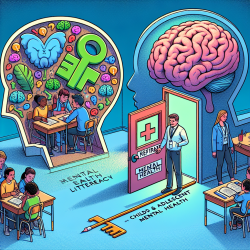Introduction
The landscape of autism intervention is evolving, with increasing recognition of the neurodiversity movement's emphasis on accepting autism as a natural variation of human experience. The research article "Neurodiversity and Autism Intervention: Reconciling Perspectives Through a Naturalistic Developmental Behavioral Intervention Framework" presents a compelling argument for bridging the gap between traditional autism interventions and neurodiversity principles through Naturalistic Developmental Behavioral Interventions (NDBIs).
Understanding the Conflict
Autism intervention proponents often focus on treatments that enhance social communication skills and behavioral flexibility, aiming to improve quality of life. Conversely, neurodiversity advocates view autism as a dimension of human diversity, emphasizing acceptance and accommodation over correction. This dichotomy has led to tensions between the two perspectives.
The Promise of NDBIs
NDBIs offer a promising framework to reconcile these perspectives. By integrating developmental and behavioral theories, NDBIs focus on natural settings, shared control between the child and caregiver, and leveraging natural contingencies to teach developmentally appropriate skills. This approach aligns with the neurodiversity movement's emphasis on personal strengths and self-determination.
Implementing NDBIs: Practical Steps for Practitioners
- Focus on Strengths: Utilize the child's existing interests to maximize engagement and skill acquisition.
- Co-construct Goals: Collaborate with the child and family to set meaningful, personalized intervention goals.
- Emphasize Naturalistic Learning: Conduct interventions in everyday environments, using naturally occurring reinforcements.
- Incorporate Autistic Perspectives: Engage with autistic individuals to ensure interventions are respectful and aligned with their experiences.
Encouraging Further Research
While NDBIs show promise, there is room for growth. Practitioners are encouraged to engage in further research and dialogue with the autistic community to refine these interventions. By doing so, they can contribute to a more inclusive and effective approach to autism intervention.
Conclusion
Naturalistic Developmental Behavioral Interventions represent a significant step toward bridging the gap between traditional autism interventions and the neurodiversity movement. By focusing on strengths, co-constructing goals, and emphasizing naturalistic learning, practitioners can create more inclusive and effective interventions that respect and celebrate neurodiversity.
To read the original research paper, please follow this link: Neurodiversity and Autism Intervention: Reconciling Perspectives Through a Naturalistic Developmental Behavioral Intervention Framework.










